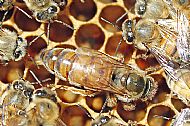This video clip shows a queen bee being cleaned by her attendands before continuing to lay more eggs.
This video clip explains the life cycle of the queen bee.
The Queen's main role is to lay eggs which will later hatch, this photo shows eggs which are layed one in each cell.
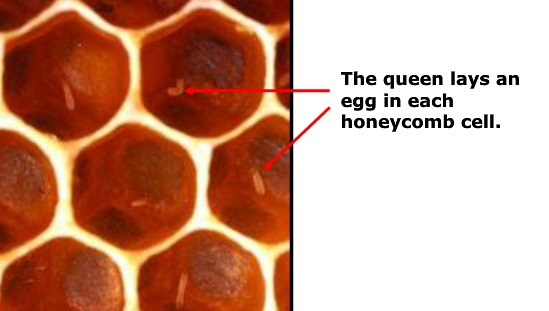
These eggs hatch in to larvae, seen here in this photo.
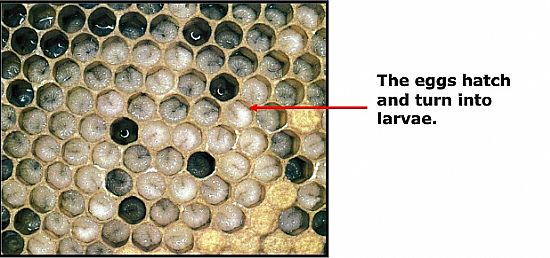
When the larvae reach 9 days old the cell in which it hatched is then sealed by the worker bee's.
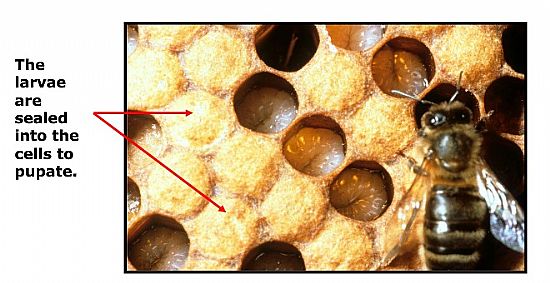
The transformation from larvae to a new worker bee is compleate after 21 days the new worker bee emerges from it's cell ready to get on with her duties. Her first job is to clean the cell from which she has just emerged, ready for the Queen to lay another egg in to it.
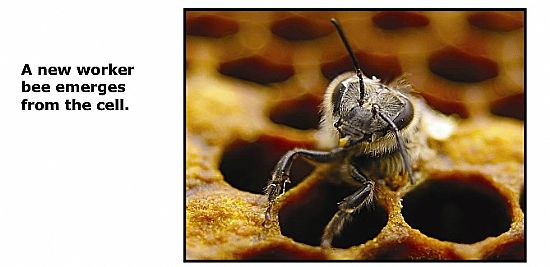
The role of the Queen Bee in the Hive.
The queen bee is the heart and soul of the honey bee colony. She is the reason for nearly everything the rest of the colony does. The queen is the only bee without which the rest of the colony cannot survive. A good quality queen means a strong and productive hive.
As a beekeeper, on every visit to the hive you’ll need to determine “Do I have a queen?” and “Is she healthy?”
Only one queen lives in a given hive. She is the largest bee in the colony, with a long and graceful body. She is the only female with fully developed ovaries. The queen’s two primary purposes are to produce chemical scents that help regulate the unity of the colony and to lay lots of eggs. She is, in fact, an egg-laying machine, capable of producing more than 1,500 eggs a day at 30-second intervals. That many eggs are more than her body weight!
The other bees pay close attention to the queen, tending to her every need. Like a regal celebrity, she’s always surrounded by a flock of attendants as she moves about the hive. Yet, she isn’t spoiled.
These royal attendants are vital, because the queen is totally incapable of tending to her own basic needs, she can neither feed nor groom herself. She can’t even leave the hive to relieve herself, so her doting attendants (the queen’s court) take care of her basic needs while she tirelessly goes from cell to cell doing what she does best . . . laying eggs.
The gentle queen bee has a stinger, but it is rare for a beekeeper to be stung by a queen bee. In general, queen bees use their stingers only to kill rival queens that may emerge or be introduced in the hive.
The queen can live between two and four years, but replacing your queen after a couple of seasons ensures maximum productivity. Some beekeepers routinely replace their queens every autumn. That practice ensures that your hive has a new energetic young queen each spring. You may wonder why you should replace the queen if she’s still alive. That’s an easy one: As a queen ages, her egg-laying capability slows down, which results in less and less brood each season.
Less brood means a smaller colony. And a smaller colony means a lackluster honey harvest for the beekeeper.
As a beekeeper, your job is to anticipate problems before they happen. An aging queen — more than a few years old — it's something that the beekeeper can deal with by replacing her after checking her egg laying before you have a problem.
